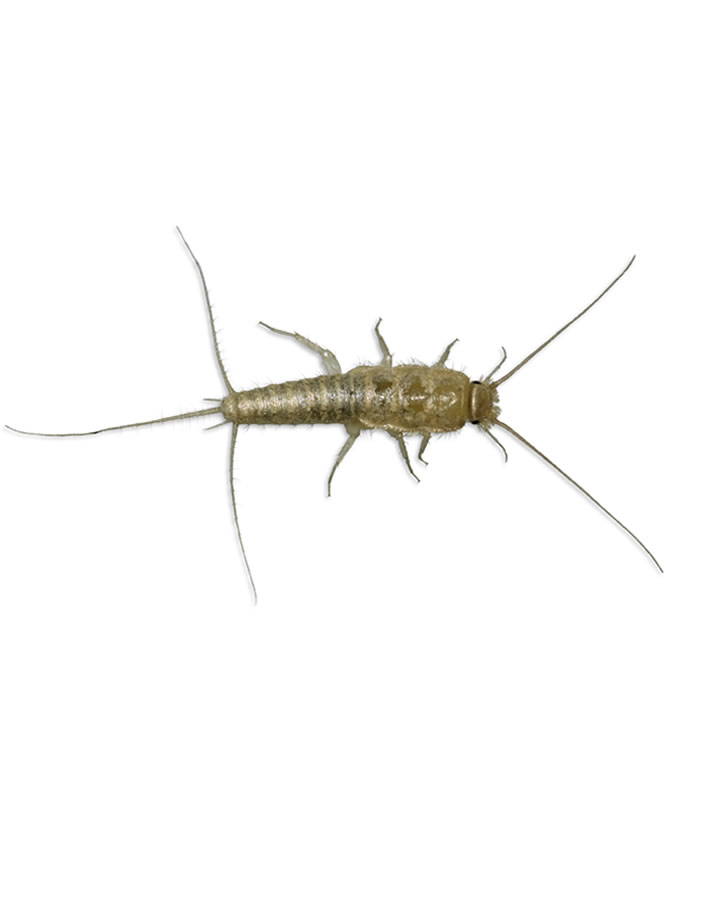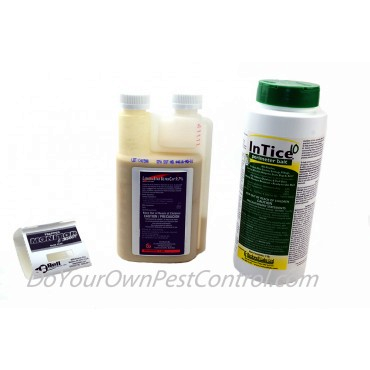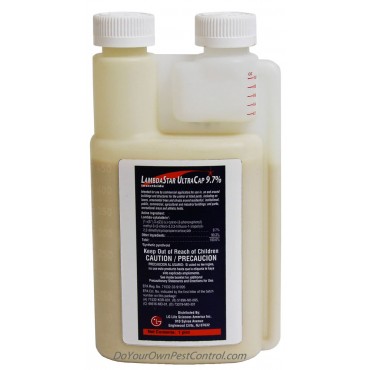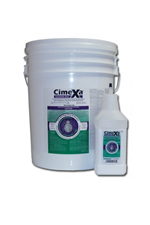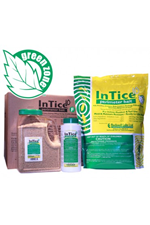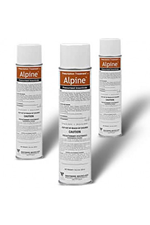Eliminate Silverfish
Eliminate silverfish by understanding silverfish behavior and insecticide treatments. Silverfish are unable to survive in low relative humidity. Reducing moisture and humidity is critical for silverfish management. It is also important to remove their food sources. After inspection, moisture control, and elimination of the food sources, insecticide application treatments are required for silverfish control and elimination.
- Inspect and get rid of food sources
- Reduce clutter and moisture
- Insecticide applications
Silverfish Damage and Feeding Habits
In order to properly treat and control silverfish, their feeding behavior should be understood. They can roam some distance for food, but once they have found a food source, they remain close to the source.
These nuisance pests feed on natural textiles, wallpaper pastes, books and paper. Silverfish eat both protein and carbohydrates. Normal goods for their diet include: dried beef, rolled oats, flour, paper, starch, cotton, silk, some synthetic fibers, sugar, dead insects, glue, paste, and linen. In damp basements or attics they can also feed on the surface molds. They feed on book bindings and commonly eat the glue behind wallpaper.
Silverfish damage to paper goods can be significant.
Silverfish Infestations and Inspection
Silverfish prefer a dark, moist environment and require a large supply of starchy foods or molds. They can be found many places inside your home but are mainly close to food sources. They are nocturnal and can run quickly.
To detect and monitor infestations, use insect sticky traps.
There are many locations for their habitats because of feeding behaviors. They love cardboard, paper and glue. Cardboard boxes, magazines, and book bindings should be the start of your inspection. They can be in furniture because the glue holds it together. They can be in kitchen cabinets, and bathroom vanities from the glue in the joints. They will eat food items like dried beef and oats but prefer the glue and starchy items.
They are found in attics due the blown in paper insulation and any storage boxes. Silverfish may get trapped in sinks and bathtubs as they were seeking moisture.
Because they molt during their adult lives, their cast skins may be a useful detection too.
Wallpapers may have irregular shaped holes; the silverfish trying to get to the paste.
Silverfish may bite very small holes in various fabrics, including cotton, linen, and silk, even though they cannot digest either linen or cotton. Inspect all cloth closets, since they will eat cotton, linen and silks. They may leave a yellow like stain on fabric. Silverfish will damage rayon, but not feed on it extensively like firebrats.
Insecticide Applications-Silverfish Control
Liquid Sprays: Spray a perimeter foundational spray around the building. Spray a band of 2-3 feet. Suggested residual insecticides are LambdaStar UltraCap 9.7or Cyper WSP. These are quarterly treatments, and both insecticides have a broad label that will manage and control many insects. Cyper WP is a wettable powder formulation that is visible against dark surfaces while D-Fense SC is not visible. Both products may also be sprayed inside along entry points and baseboards.
Dusts: Use an insecticide dust like D-Fense Dust or Cimexa Dust in the attic, if the silverfish are in the attic area. Use 1 lb of dust per 800-1000 square feet. The D-Fense Dust will last 6-12 months. The Cimexa dust will last a couple of years. Both dust would need a duster applicator. The easiest, inexpensive duster to crank out dust in broad areas is called the Dustin Mizer. For smaller areas, use a bellow duster. Only dust these insecticide dusts in areas that are dry and keep the dust away from children and pets.
Use insecticide dusts in areas where silverfish are hidden:
- Attic Insulation
- Behind Refrigerators and Ovens
- On Boxes
- Light fixtures
- Electrical outlets
- Underneath siding
Baits: An alternative to insecticide dusts would be the use of an insecticide bait. The bait is formulated to attract the silverfish (and other insects), eat the bait and die. Suggested baits are Intice Perimeter 10 or Invict X Press.
Aerosols: Using aerosols like Alpine PT or Zenprox Aerosol with their crack and crevice straw tips are helpful to get behind baseboards, corners and other traveling paths of silverfish.
Some Steps to help "Silverfish-Proof" Your Home
Moisture: Silverfish are not able to reproduce in buildings with a relative low humidity. Silverfish reproduce best at 72-81°F and 75-97% relative humidity. Fix any water leakage such as leaky pipes. Check damp basements and water condensation areas. Use a dehumidifier and ventilate attics and closed rooms. Air-tight houses with efficient humidifiers that keep the relative humidity above 50% consistently, can develop major silverfish infestations that are not easy to control, even with insecticide usage.
Inspect: Inspect furniture, cartons and boxes that are brought into your home. Also, inspect items in storage, especially boxes.
Exclude: Silverfish may enter your home from the outside, so seal up holes and cracks around windows and doors.
Reduce potential food sources for the silverfish: Place old books, papers, cardboard boxes and starched lines in sealed plastic containers.
Vacuum: Regularly vacuum cracks and crevices around the home since silverfish hide and lay their eggs in cracks and crevices(throw vacuum cleaner bag away) .
General Clean Up: Keep basements, laundry rooms, and bathrooms, especially shower stalls, clean and dry.
Pantry Items: Store possible food sources in tight containers in your pantry.
Silverfish Description
Silverfish are known as bristletails and are of the Order Thysanura. Their bodies are flat, long and slender. Silverfish are ancient pests and are primitive. They do not have wings and do not fly. They have little or no metamorphosis and the juveniles look like adults. Silverfish live a long time. It takes from three months to three years for the development of silverfish from an egg to an adult. They can continue to live for up to three years. Adult silverfish lay their eggs in cracks and crevices near food sources.
Silverfish-(Lepisma saccharina)
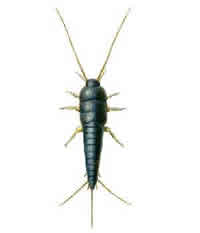
Lepisma saccharina
Silverfish (Lepisma saccharina) is found over all parts of the USA.
It has a uniform scaled silver gray color over the its upper surface and is about 1/2 inch long. It has a fish like appearance and fish like movements.
This type of silverfish prefers humid conditions and temperatures ranging from 70- 80 degrees F. It requires high humidity and can be found near moisture, basements, lower floors, crawl spaces, etc.
Silverfish-(Ctenolepisma quadriseriata)
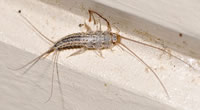
blog.insectmuseum.org
Ctenolepisma quadriseriata
The four-lined silverfish (Ctenolepisma quadriseriata) is marked with four dark lines extending the length of the body. They can live either outside or inside buildings. They can live in either dry or moist conditions.
Its maximum size is 3/4 inch long.
They prefer temperatures between 80- 85 degrees F and a wide humidity range.
They can be found throughout the house from the basement to the attic. They can be located in attics, storage areas, kitchen, etc.
Silverfish-(Ctenolepisma longicaudata)
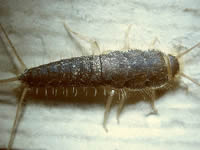
en.wikipedia.org
Another type of silverfish (Ctenolepisma longicaudata) is a larger silverfish that can reach up to 3/4 inch. It is commonly called a Giant Silverfish or Long-tailed silverfish.
It is silver or gray on the back.
Their habitat can range in the northern, midwestern and southern states. This silverfish is common in California and New England.
They are not found outdoors. They prefer temperatures between 80- 85 degrees F and have a wide humidity range. They can be found throughout the house from the basement to the attic. They can be located in attics, storage areas, kitchen, ect.
